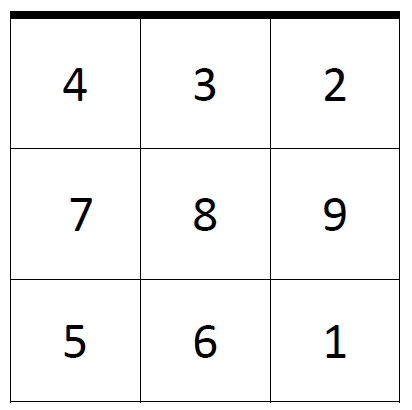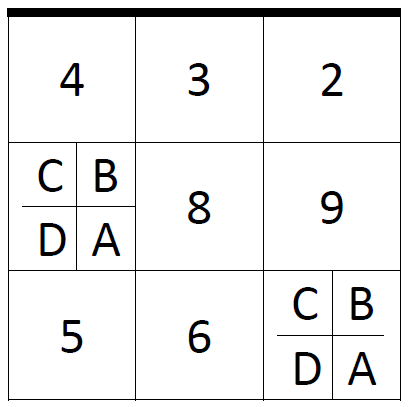After seeing my set diagram post, a reader asked me for something similar with advanced service zones. Most folks are familiar with the standard service zones that are basically the same as the court locations 1 through 6. People will take it a step further by calling for seam serves. For example, 5/6 is generally the area between the passer in Position 6 and the one in Position 5 (some of my thoughts on calling service zones).
If you want to take things to another level, you can expand the zones to 9 in total. You do this by inserting 3 new ones between the traditional from and back row zones.
Yes, it’s a little strange, but there you go. It does at least provide a more narrow set of zones. Plus, you can use it for attack/defense analytics as well.
To that end, if you want to take things to an even more complex level, you can use the system employed in DataVolley (see the training session my Medaille staff went through with Jeff Liu to learn more about using DV). It splits each zone into 4 subzones using letter designators.
So a ball all the way into the corner of Zone 1 would be 1A. The exact opposite corner of the court is 4C.
I don’t know anyone who goes that deep for their service zone calls. If you do, I’d love to hear how you put it into match practice.
A big part of thinking about service zones is what you’re looking to accomplish. Attacking the passers is one thing (by that I mean trying to cause a bad pass). Putting the ball in a certain area to disrupt the other team’s offense or to make them more predictable is a different consideration.

